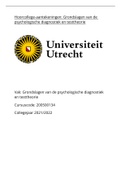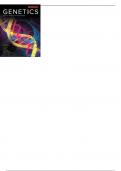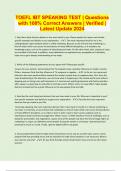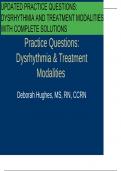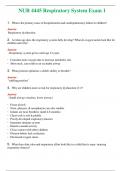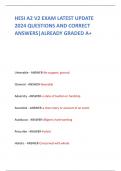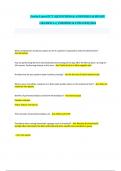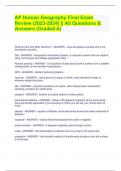Class notes
Hoorcollege-aantekeningen: Grondslagen van de psychologische diagnostiek en testtheorie
- Course
- Institution
Grondslagen van de psychologische diagnostiek en testtheorie In deze hoorcollege-samenvatting: Diagnostiek HC1: Inleiding HC2: De diagnostische cyclus HC7: Intelligentiediagnostiek en neuropsychologie HC9: Diagnostiek in arbeids- en organisatiepsychologie HC11: Forensische diagnostiek...
[Show more]
